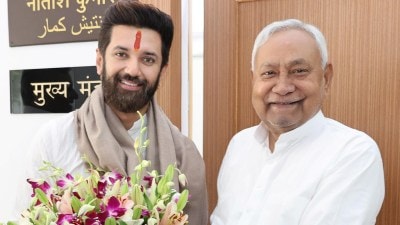To the US via Bangalore Bharat Wariavwalla
Kipling's Kim, a rope trickster, a naked sadhu or a starving child these are all typical images of India in the US. An admonishing Nehru, ...

Kipling’s Kim, a rope trickster, a naked sadhu or a starving child these are all typical images of India in the US. An admonishing Nehru, a petulant Krishna Menon, a screaming Indira Gandhi, the list can go on… Both sets of images grossly distort the Indian reality but every US administration chose to live with these distortions. We did not matter to them and therefore they didn’t have the need to see us as we were.
We matter now and therefore the Clinton administration sees us differently. It has provided new, more realistic and more pleasing images of India, which came forth during Vajpayee’s recent visit to the US.
Hear what Bruce Riedel, a hard-headed bureaucrat in the National Security Council, had to say during a press briefing: “India is an extraordinary example of the success of diversity in building a stronger unity out of many kinds of cultures and religions.” This has been our one achi-evement, unmatched by anyone anywhere in the world, but it has only now been noticed in the US.
Let alone a global partnership, even a productive bilateral India-America relationship was not possible until now. And for an obvious reason: we were of little strategic and economic importance. Under Clinton, the US has moved closer to us, and it’s all thanks to Bombay and Bangalore. The Pokharan II nuclear tests of May 1998 made the US turn to South Asia out of fear that unless it intervened, India and Pakistan would go further along the nuclear path. The fear is still there, although left unstated during the Vajpayee visit. The bomb made America somewhat apprehensive about our intentions but, by itself, it did not raise our status in American eyes.
In contrast, Bangalore relates America to India at an economic and technological level; Bangalore stands for India’s technological achievement; Bangalore heralds our entry into the 21 st century. This is what Bangalore signifies to an American corporate executive, a military planner and a diplomat.
Infosys chairperson, Narayanmurthy, and the foreign minister, Jaswant Singh, succeeded in projecting through Bangalore a country that has economically freed itself from the yoke of babudom. Of course, Jaswant Singh’s task was also to present nuclear India as a responsible nuclear weapons power. His urbanity and sophistication helped him. A friend of mine at Harvard, whose great passion is research on the number of organs Johann Sebastian Bach used throughout his career once said to me: “This guy doesn’t look like a mosque buster.”
India and the US now relate to each other at another plane. Our diversity fascinates President Clinton, and it is entirely to his credit that he, among all previous presidents, discovered it. It’s a pity, therefore, that Vajpayee did not once speak about our immense diversity and how well we have managed it. At the Asia Society dinner, for instance, the PM could have reflected on how we cope with our diversity and what others could learn from our experience. Instead he devoted far too much time on jehad and international terrorism. Does a country that aspires for a permanent seat on the UN Security Council have only one obsession?
If there is one place where our diversity is appreciated it is the US, which has often called a melting pot. Lately, however, the melting pot simile came under criticism because it smacks too much of uniformity. A Congresswoman from Minnesota, Shirley Chishulm, preferred to call America a “salad bowl” where the ingredients are together but separate and distinct. The American salad bowl and the Indian mosaic are, thus, natural allies for their nationhood is constituted on the principle of diversity.
American recognition of our diversity has to an extent brought about a change in its Kashmir policy. It now understands that the principle of self-determination cannot be uncritically applied to Kashmir. There is now a widespread recognition that an independent Kashmir created in the name of religion seriously jeopardises the stability of the Indian mosaic.






- 01
- 02
- 03
- 04
- 05

























